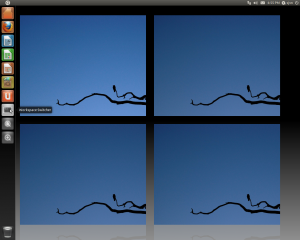The Linux desktop is dead. Long live the Linux desktop.


It's never going to catch up with Windows or Mac OS X in user popularity. It's never going to show up as a common option from mainstream vendors. And, you'll never be able to buy it at your local Best Buy or other big box store.
Why? Well there are a lot of reasons; but none of them have anything to do with its quality. I use desktop Linux distributions not because of some romantic attachment to free software or because I hate Windows, but because they work better and they're far more secure than Windows or Mac OS X.
Historically, desktop Linux never got a fair shot because of Microsoft's Windows monopoly and strong-arm tactics. For example, when Linux-powered netbook started eating Microsoft's lunch on low-end laptops, Microsoft brought XP Home back from the dead and almost gave it away to vendors to stop the Linux bleeding.
It also didn't help any that Microsoft finally realized what a total flop Vista was and brought back XP for all users. Indeed, Vista's failure hurt Linux. If Microsoft had actually stuck with that dog of an operating system, desktop Linux would have gained more fans.
That was then. This is now. Those factors have always been around. They still are today. Several other things have arisen that makes me doubt that the traditional Linux is going to go anywhere.
Gallery: My top five Linux desktop distributions
First, the main Linux desktop interfaces are at best, OK, and one of them GNOME 3.0, is awful. I think Linus Torvalds had it right when he called for a GNOME fork. KDE 4.x is fine, but I've never found it that compelling and while I like Ubuntu's GNOME-based Unity desktop for beginners, it's not for me or, I suspect, other expert users.
On top of that, Red Hat, the leading Linux company, has made it clear that it has no real interest in a fat-client desktop. Red Hat CEO Jim Whitehurst sees the traditional desktop becoming a legacy application. That leaves the leadership of the Linux desktop to Canonical, Ubuntu's parent company, and SUSE.
Sure, Ubuntu is the most popular Linux desktop, but to paraphrase Robin Williams, that's like being the best-dressed woman on radio. As for SUSE, we know they're going to keep supporting SLED (SUSE Linux Enterprise Desktop) and that openSUSE is likely to remain an outstanding desktop, but its long-term plans for the desktop? I don't know, and I rather doubt that they know either based on my conversations with their people.
So, while the fat-client Linux desktop isn't going to go away, and I'm certainly going to keep use it, I don't see it growing out of its niche. Even if Windows 8 craters and makes a Metro-sized hole on the desktop, Linux won't have a chance to grow at its expense because Microsoft will just keep pushing Windows 7 instead.
Where the Linux "desktop" is growing is on tablets and smartphones. As Jason Perlow pointed out, we're already living in a post-PC world. Android keeps growing like a weed on smartphones, and would Apple be flailing about with its idiotic tablet iPad design lawsuits if it wasn't frightened of Android tablets eating into its market share? I think not.
In addition to Android, Google's Chrome operating system, which relies on a local Linux kernel and the Web and the cloud for applications, continues to look promising.
I've also noticed that Google is making both Chrome OS and the Chrome Web browser ever more independent of being online. Besides local storage for applications, Google has just added local C and C++ applications--you know, conventional desktop programs--with Native Client to Chrome 14. I think a lot of users would be happy with an operating system with a Web-browser interface that would work just fine off or online, and wouldn't require them to learn a new interface, ala Metro.
So it is that while I no longer hope for the old-style Linux desktop to gain popularity, I have no doubt at all that the new, light-weight, Internet-oriented Linux desktops are going to do just fine. After all, they already are, and here it's Windows, not Linux, that's been the non-starter.
Related Stories:
The Five Best Desktop Linux Distributions
What's coming in Ubuntu's new Unity Linux desktop
Ubuntu Linux makes musical friends with the Apple iPhone